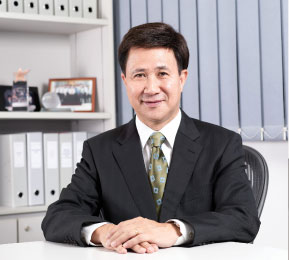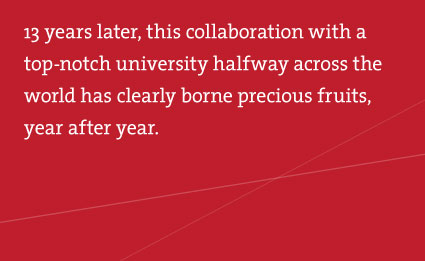

When SMA was first mooted in 1997, some might have wondered how the learning experience of students and the research quality of faculty members in Singapore and MIT could be sufficiently enhanced. Yet, 13 years later, this collaboration with a top-notch university halfway across the world has clearly borne precious fruits, year after year.
The SMA 11th Anniversary Symposium on 19 January 2010 saw a gathering of over 200 MIT and local participants, with a total of 64 research papers and 52 posters being presented by the five programmes. The second phase of SMA alone yielded 168 graduates. Our students have also gone on to stamp their mark in industries and research institutes well before graduation, with SMA partnering with 16 companies and research institutes for internships and attachments for the past year alone.
On the research front, SMA-2 researchers have so far published some 595 journal papers, 623 conference papers and 66 technology disclosures, of which 27 patents have been filed to date.
A team of three researchers – namely, Zhang Wei, a PhD student from the Chemical and Pharmaceutical Engineering (CPE) programme, Associate Professor Li Zhi from NUS and Professor Daniel Wang from MIT recently developed several new biocatalysts and catalytic systems for the efficient oxidative biotransformations for pharmaceutical syntheses. Through their collaborative efforts, several key intermediates for the production of drugs such as carbapenem antibiotics could be produced in much simpler, more economical, and more environmentally friendly ways.
Another research team from the Manufacturing Systems and Technology (MST) programme led by Professors Yue Chee Yoon of NTU and David Hardt of MIT developed a highly accurate and detailed model that simulates the micro-hot-embossing and thermal bonding processes in the manufacture of polymer-based micro-fluidic devices. This could lead to stronger and better tools and fixtures for the manufacturing equipment to mass produce reliable polymer microfluidic devices and cheaper polymer microfluidic devices for all types of applications.
I look forward to many more such results in the years to come. I am sure the students, faculty members, industry partners and stakeholders will continue to take the Alliance to greater heights.
Prof Hardy Chan Sze On
Co-Director (Singapore)
